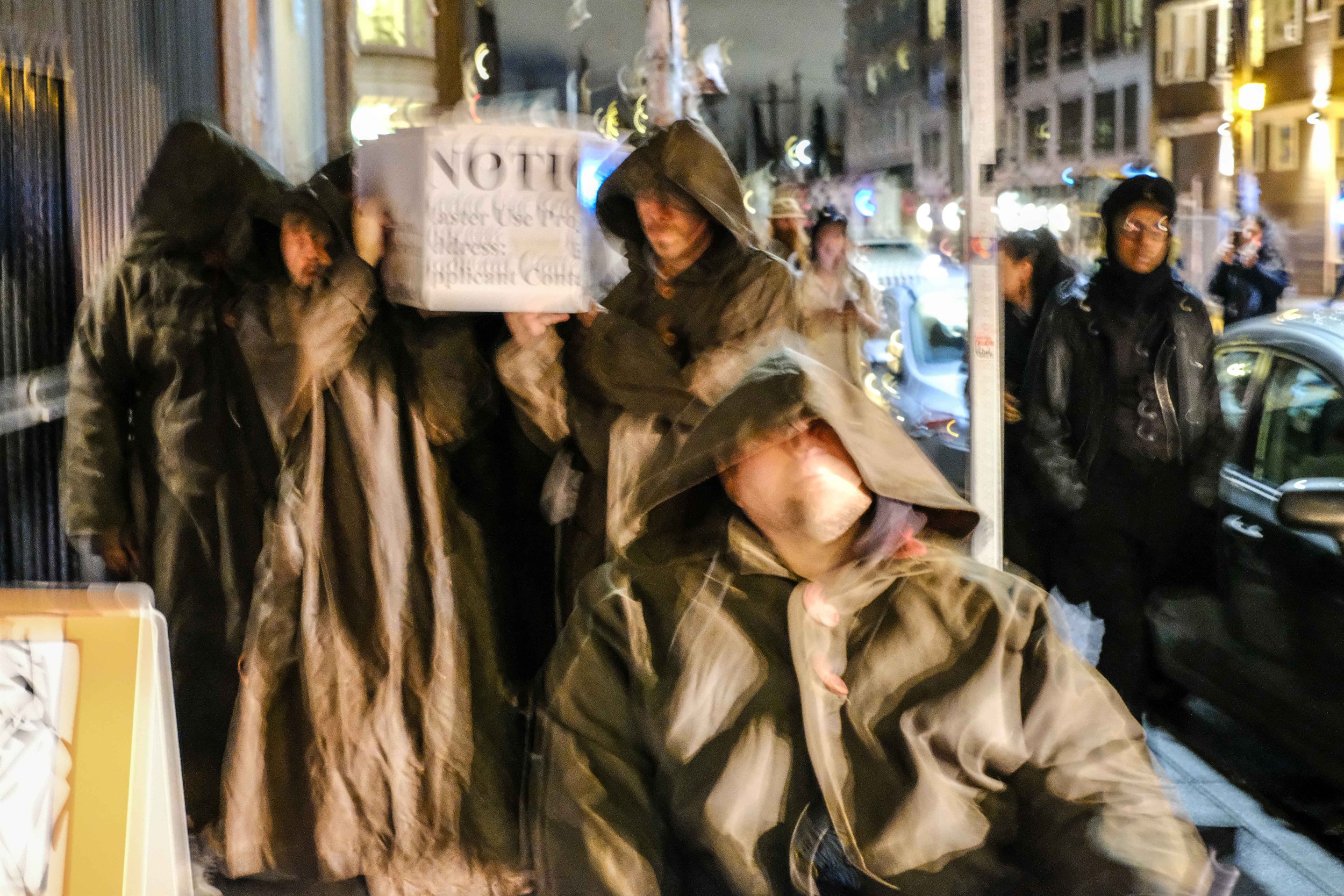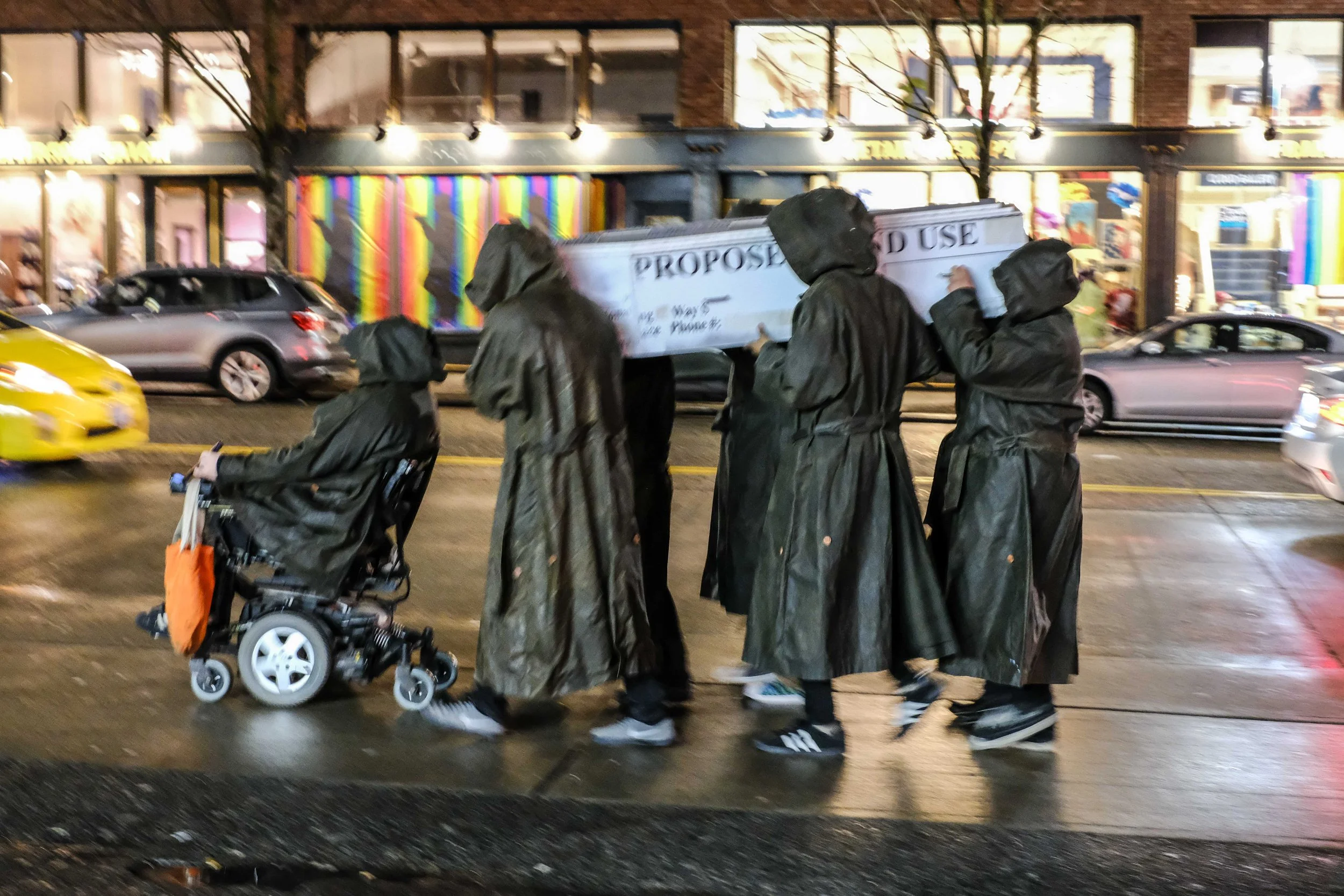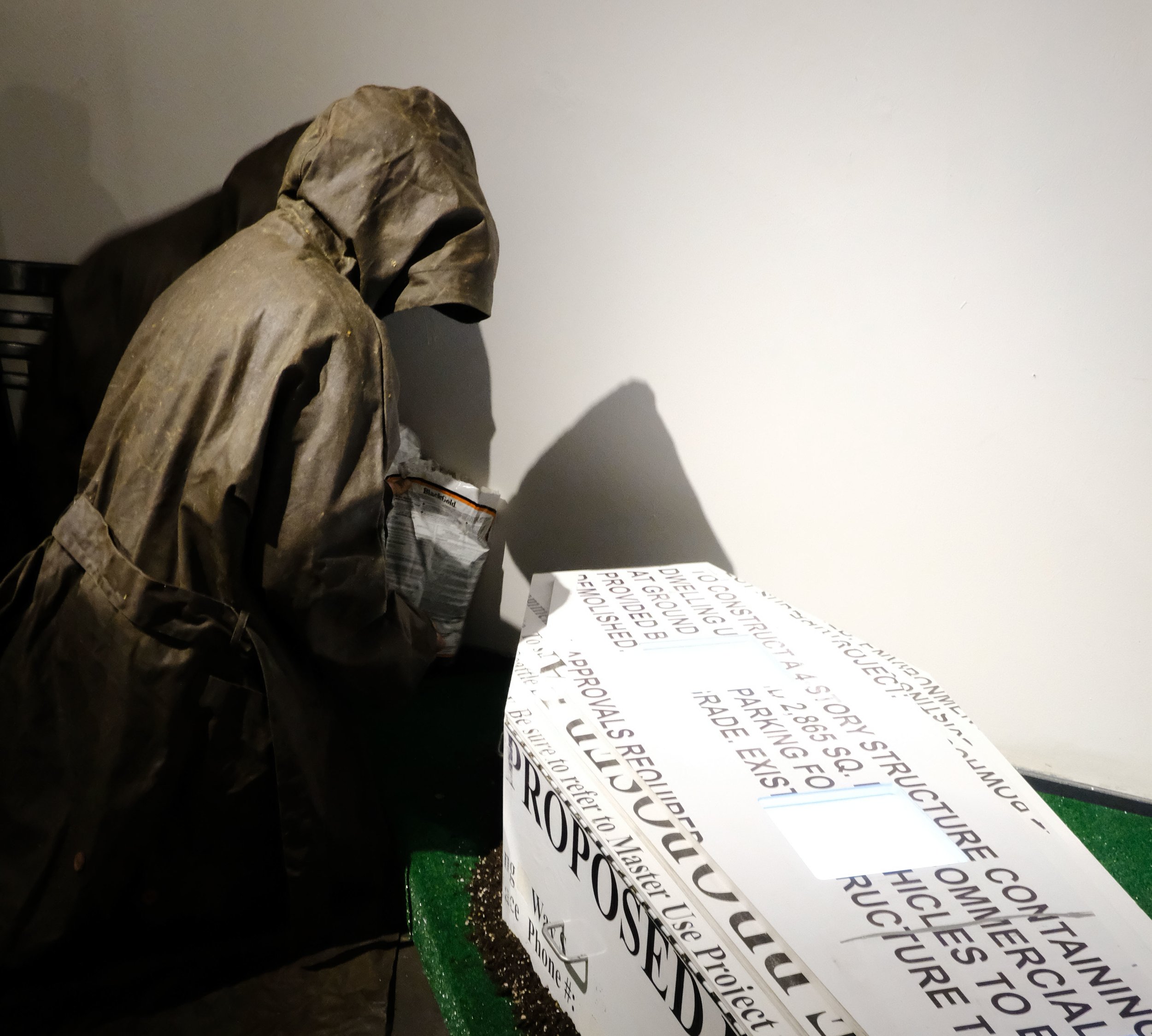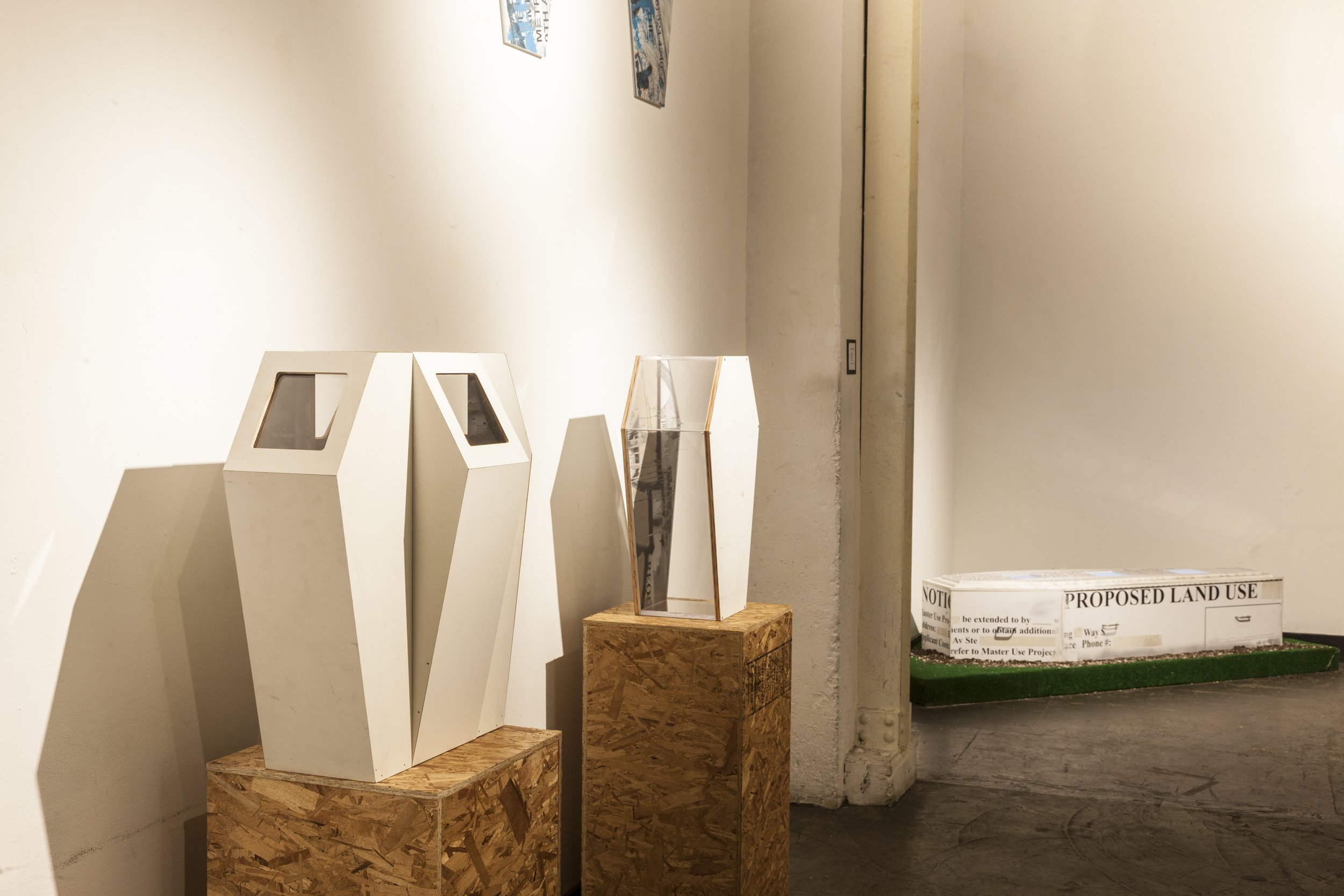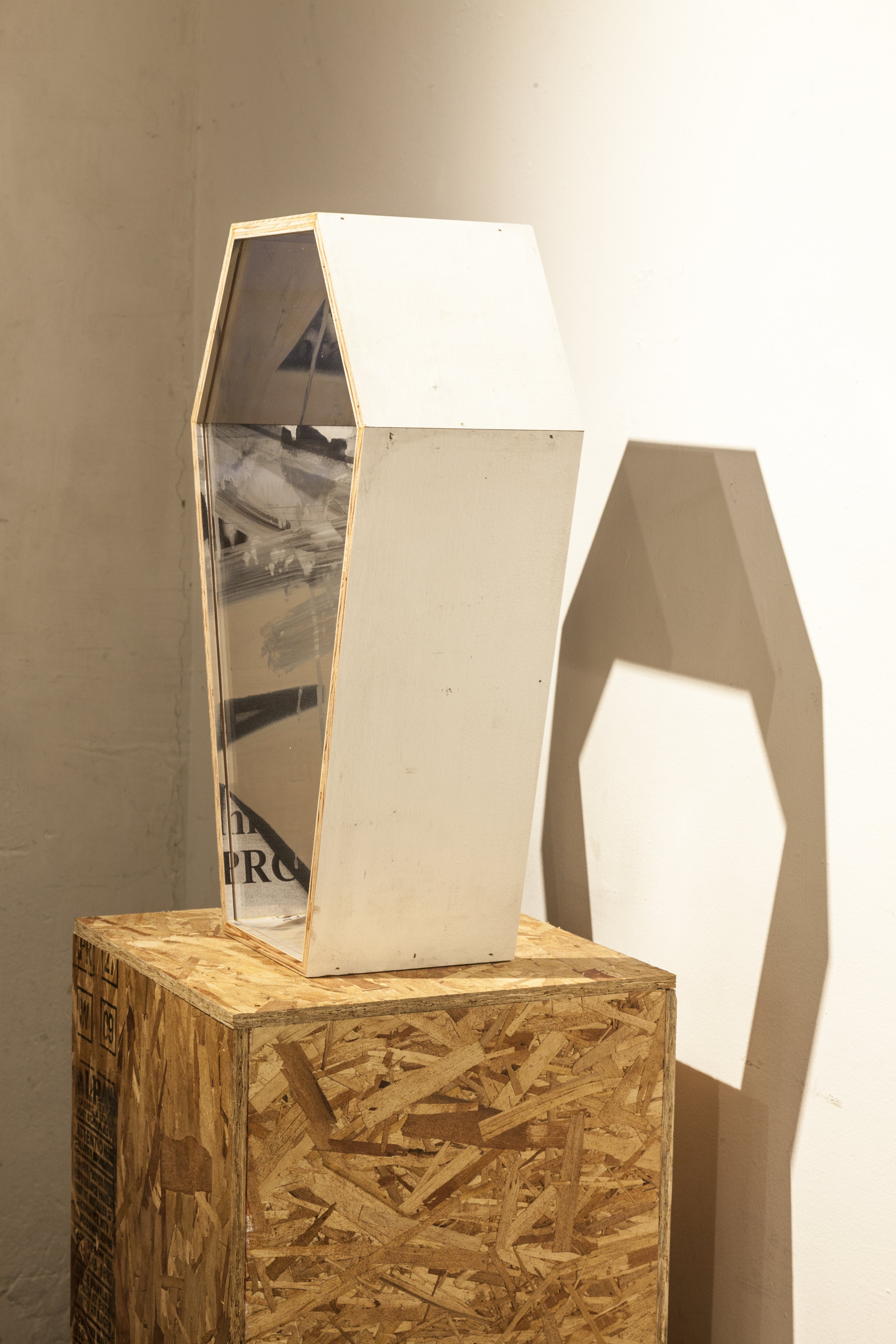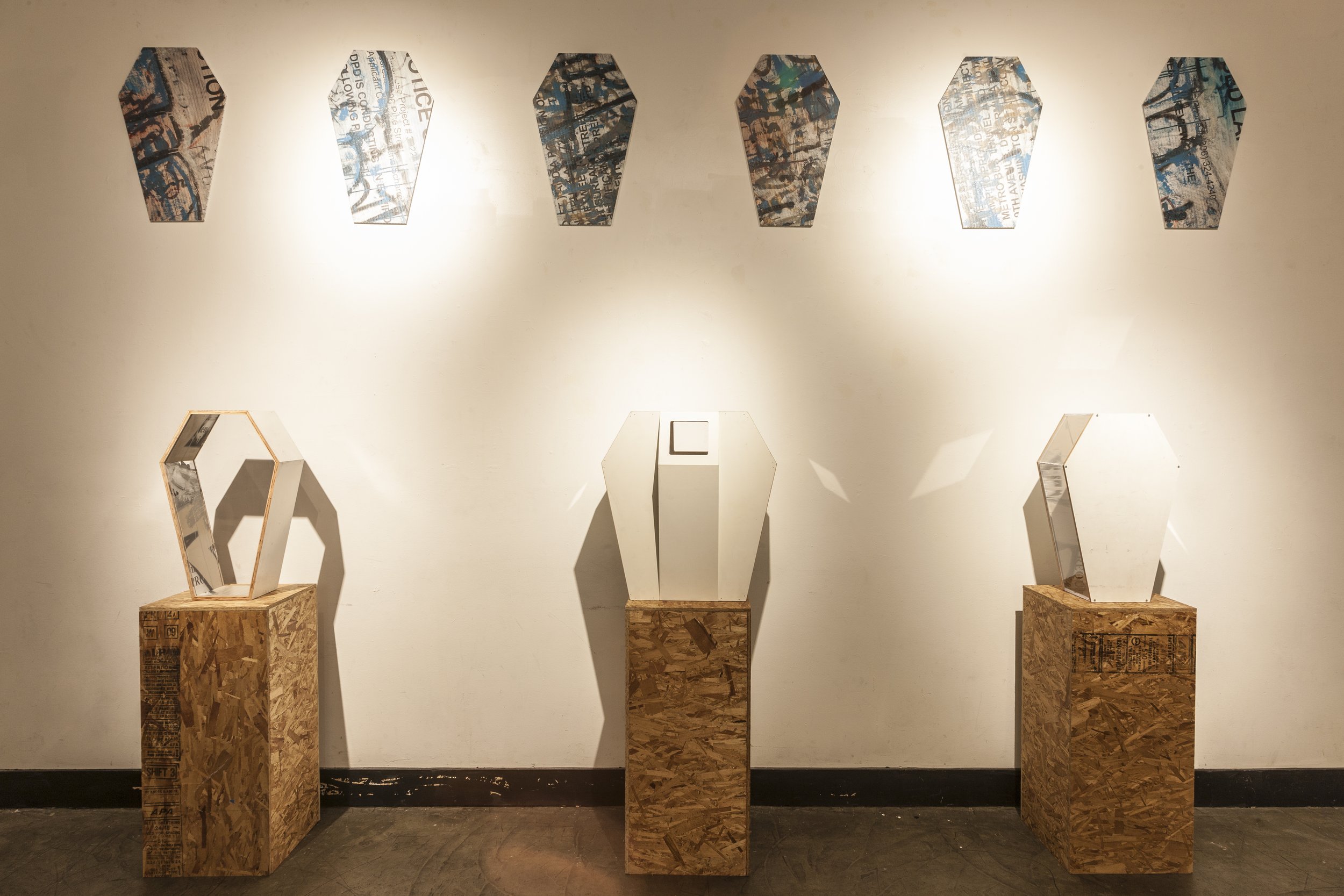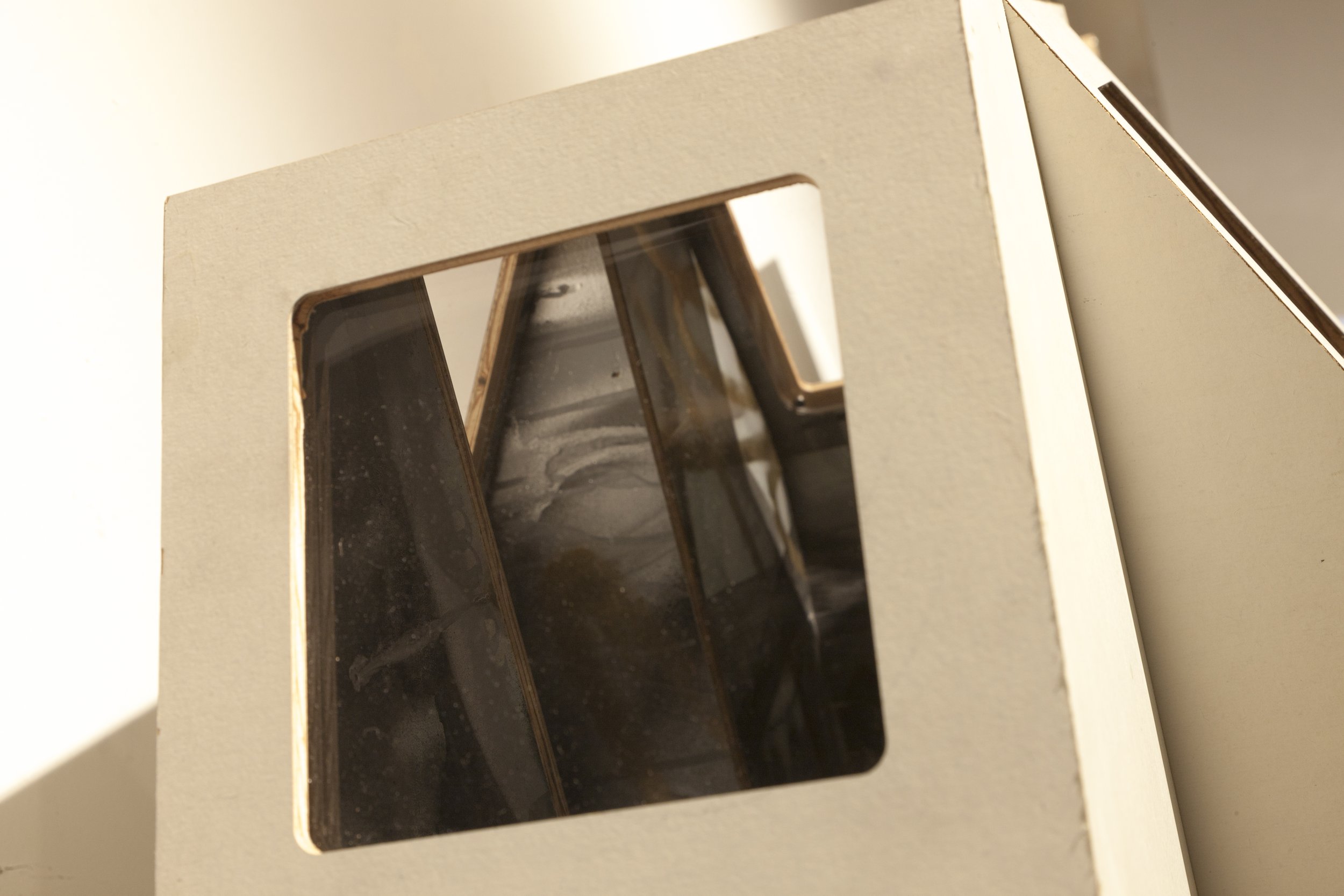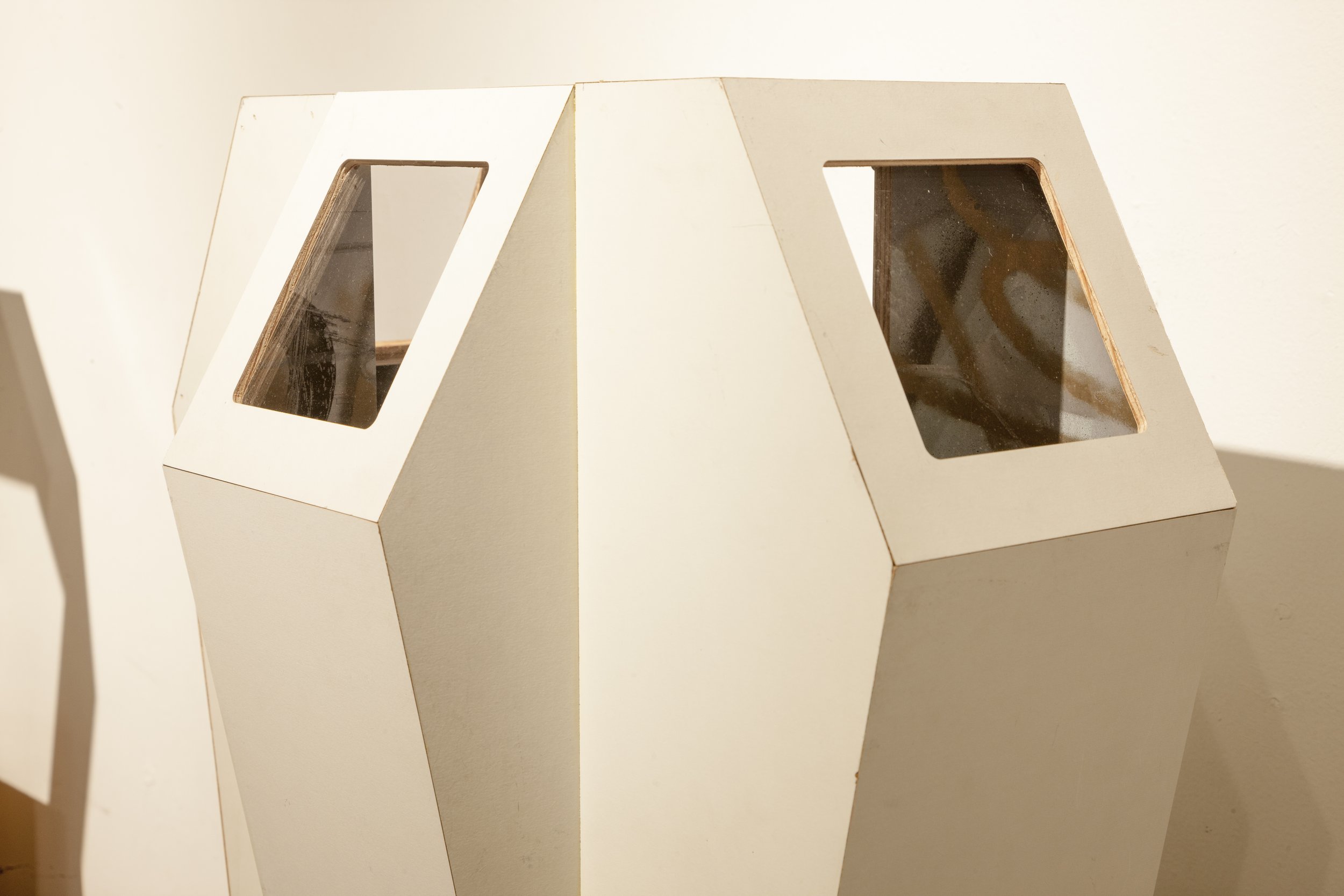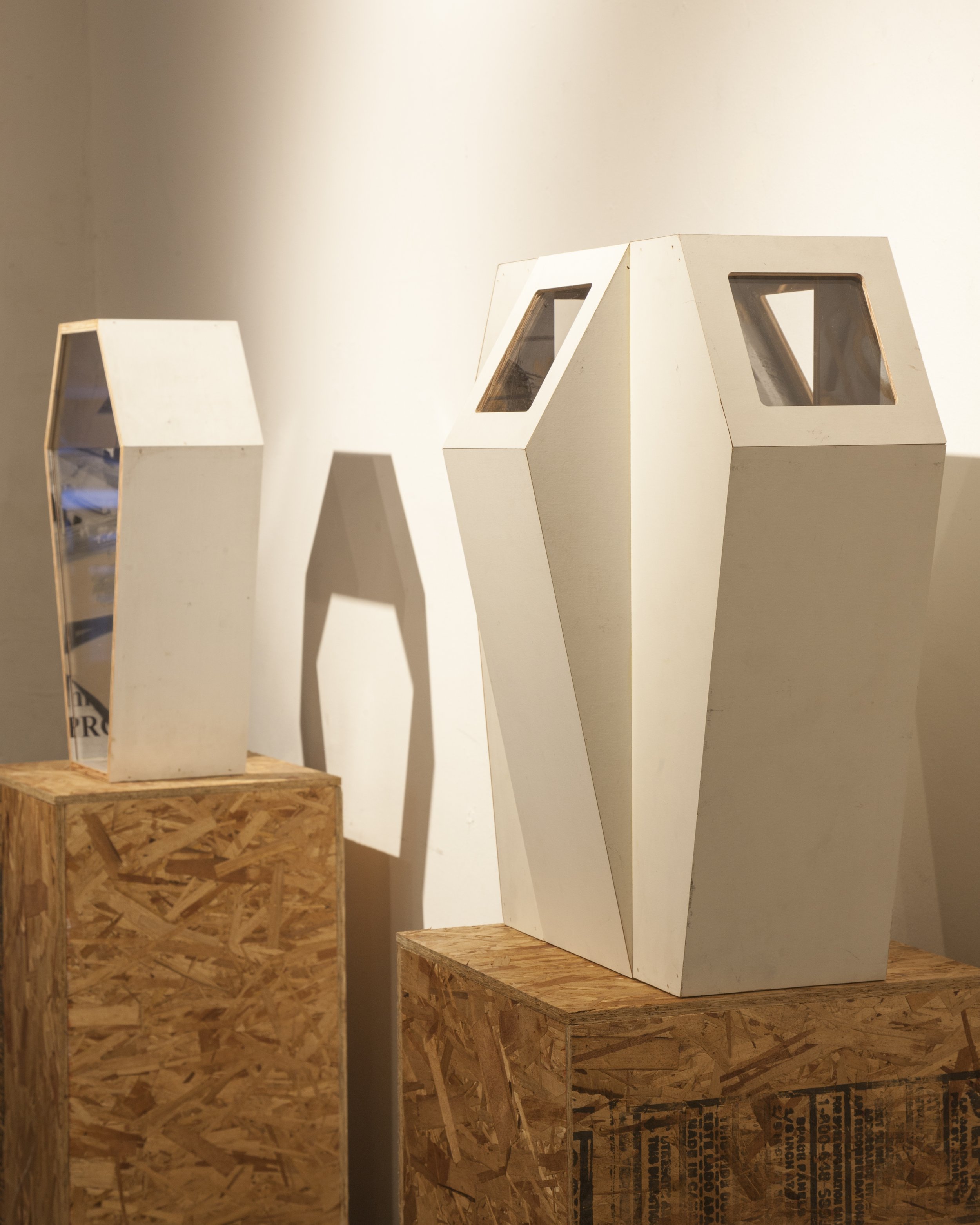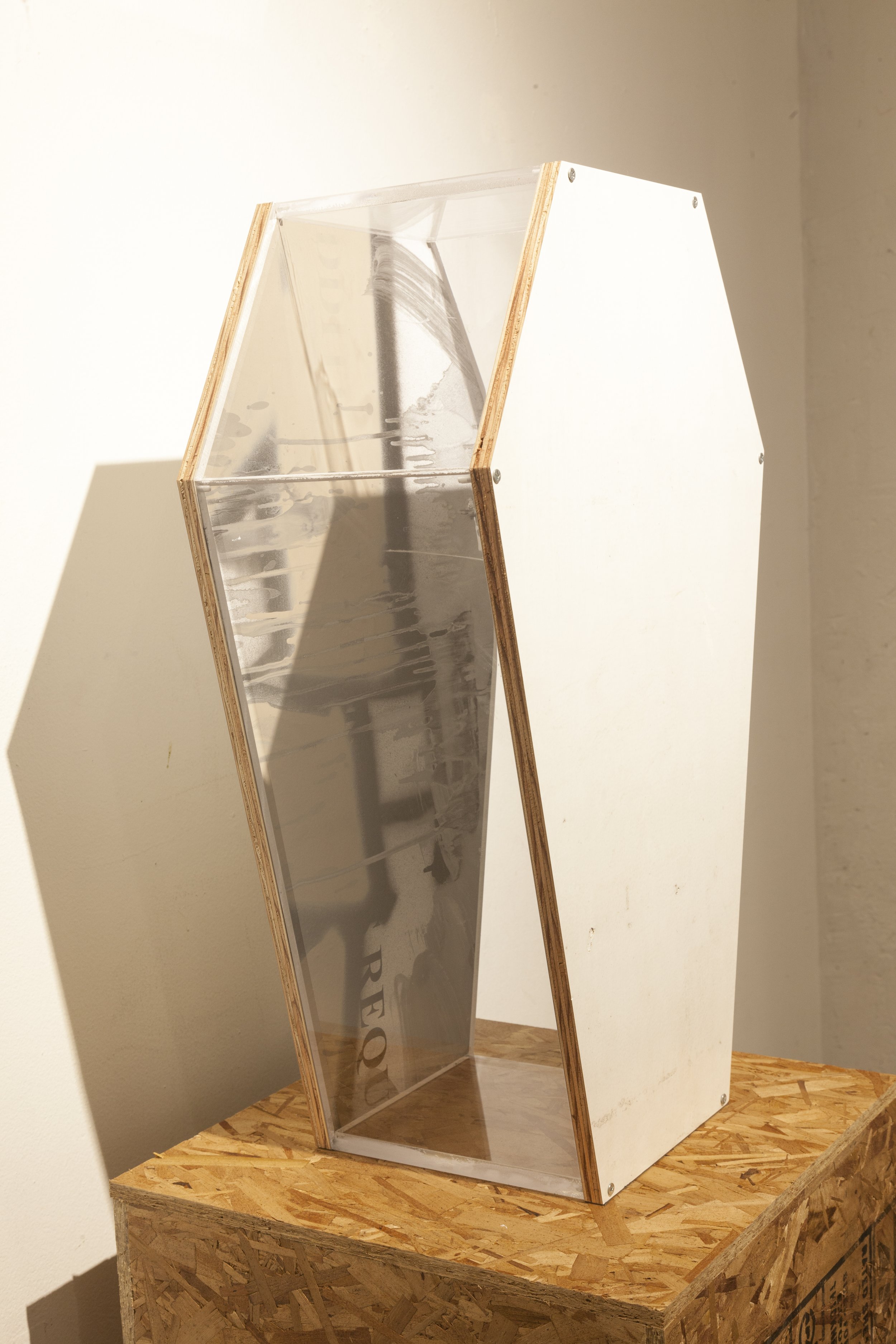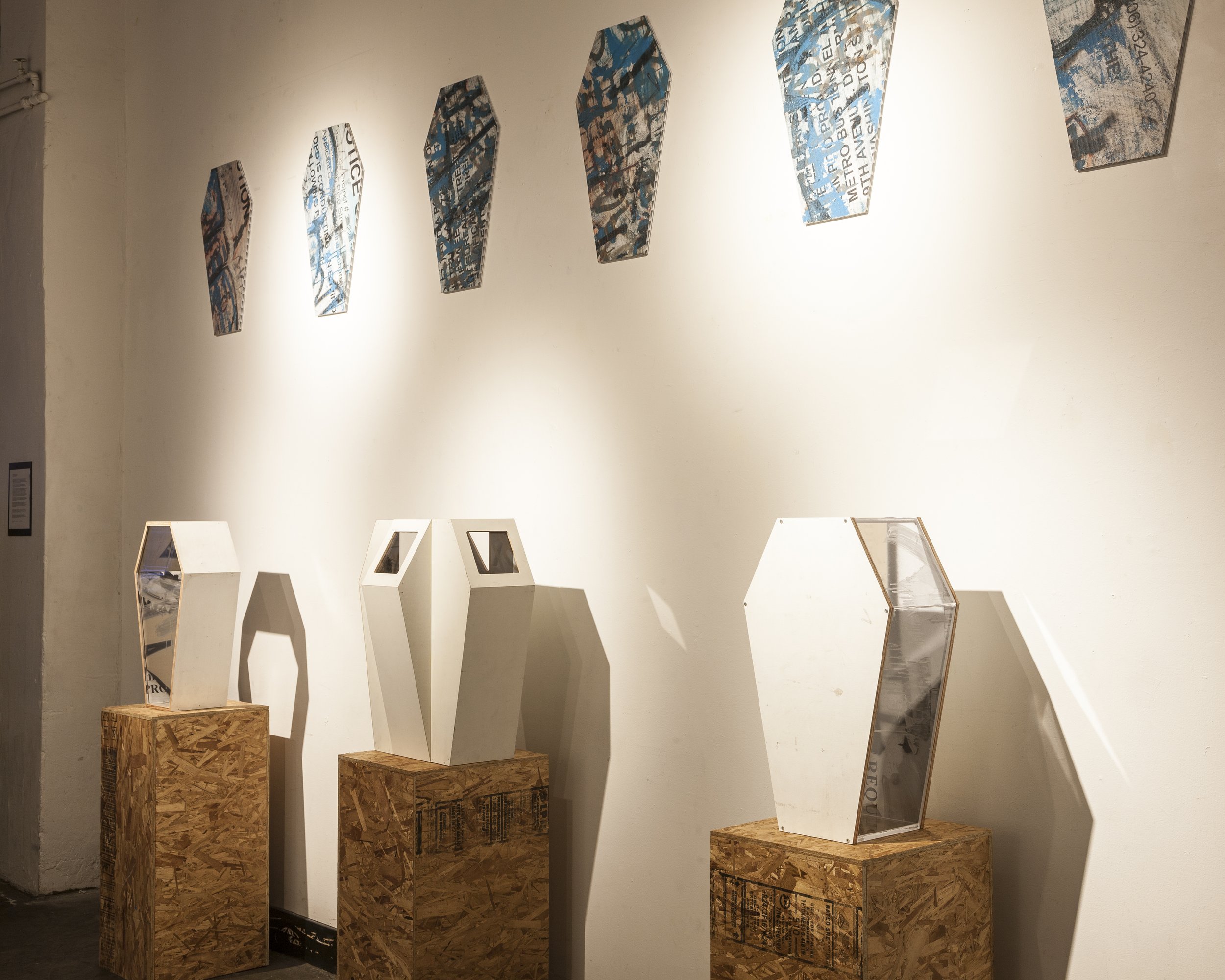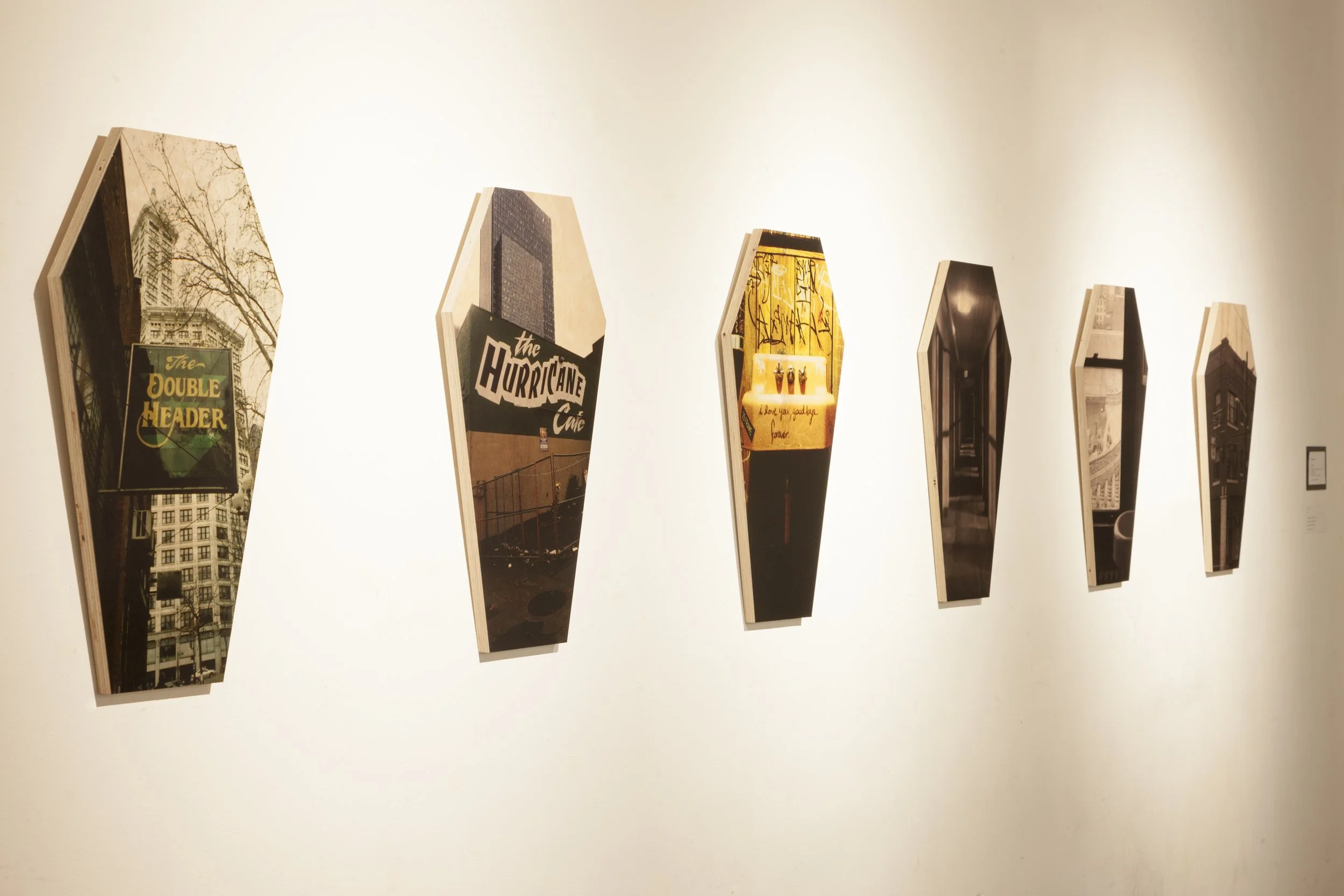“Disposable City” by Aubrey Birdwell
The structures in Proposed Land Use were fabricated from Medium Density Overlay (MDO) and Correx panels, originally printed with text detailing building developments. The materials were cut and folded into abstract geometric forms that subtly allude to coffins, reinforcing themes of loss and displacement.
“These sculptures, created from repurposed land use signs, reveal a prevailing sentiment in many cities today - one of alienation, displacement and permanent change in communities and the built environment. Former histories are mourned as public spaces disappear - making out at Bridge to Nowhere, the multiple romantically scabbed faces of the Maharaja, karaoke at Bus Stop, local ice wizards performing at Kincora, smoking cigarettes upstairs at Bauhaus, homes and cafes are replaced by private, exclusive structures. How can a city develop an active body politic and a sustainable cultural legacy? Where do communities exist, and where can we express our communal and individual voices? In the developing city, where do personal and collective histories intersect; how do they intertwine and become a part of our shared history? Who records this intersection?
The recording of history has been the provenance of colonialism; now it’s increasingly important to rediscover, tell and affirm individual and communal narratives that describe our homes and familial and familiar stories about place, gender, eroticism, consumption and inhabit our bodies and the architecture that confines us.” - Artist Statement
By repurposing discarded materials, Proposed Land Use critiques the forces reshaping our cities while reclaiming the act of documentation. These remnants of past developments become a medium for storytelling, challenging the erasure of local histories and collective memory. The transformed structures urge us to reconsider who defines place and belonging, provoking a reckoning with the impermanence of community landmarks and the narratives they once held—an urgent call to recognize and preserve the histories buried beneath imposed change.
The project invited contributions from Ukrainian-born photographer Darya Husak, members of New Mystics, and our friends at ART PRIMO.
The exhibition featured both two- and three-dimensional works constructed from repurposed proposed land use panels, plastics, and a mix of found and created imagery. Every element of the show was fabricated by Birdwell. Small, coffin-shaped 2D pieces were distributed to members of New Mystics for individual artistic expression, while an additional series of plain plywood panels served as the backdrop for Husak’s clear vinyl prints—photographs capturing lost city landmarks.
Photos by Darya Husak
various works by members of New Mystics

